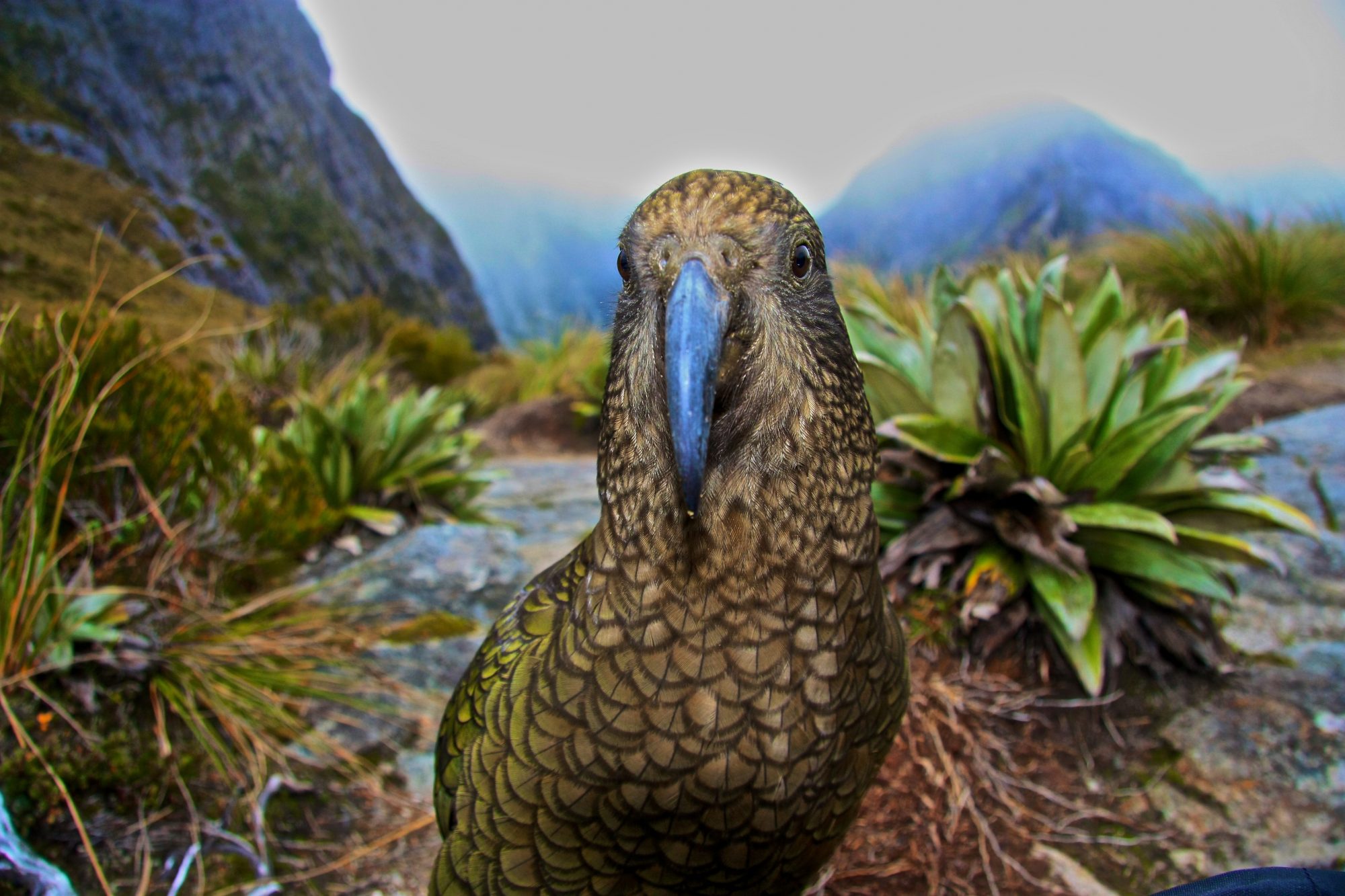UK Clean-Up Hikes For Earth Week
19.04.2024The North Face have announced an Earth Week initiative to clean-up hiking routes in England and Walkes, this coming Saturday...
New Zealand’s Kea aren’t nicknamed “clowns of the Alps” for nothing. The feisty birds announce themselves with a loud piercing cry of ‘Keee-a!’ and are always on the lookout for mischief. Kea, the world’s only alpine parrots, are found exclusively in New Zealand’s South Island. Now, roadside Kea gyms are being set up to keep them out of trouble.
Kea are mostly seen in high country and mountainous areas although the best flyers have been known to take the odd trip to the coast. While other high-profile New Zealand birds such as the kiwi and kakapo aren’t easy to spot in the wild, kea are one of the few wild birds that actually seek out humans. Steve Norris, a guide who takes small groups on walks in Fiordland with his company Trips and Tramps describes kea as “real characters” who love interacting with people. “They are amazing birds and a New Zealand icon in their own right.”
Although kea are not known to “talk” like some other parrots, they are extraordinarily clever – considered to be as smart as a four year old child and with an intelligence similar to primates. They are able to solve logic puzzles and enjoy a good challenge. However, their inquisitive nature often lands the emerald green birds in trouble.
Kea are famous for snaffling anything they can get their hooked bill and large, strong claws into. That includes wallets, passports and the odd tourist lunch. They are known to rip holes in tents and nibble away the rubber from windscreen wipers and car doors.
This behaviour can get them into sticky situations, so try to keep the birds out of harm’s way, conservationists have developed roadside kea ‘gyms’.
The idea of gyms began after road workers were left puzzled when they found road cones in odd places each time they returned to work at the Homer Tunnel at the entrance to world heritage site Milford Sound. When the road crews checked CCTV footage, they discovered that a group of kea were responsible for shifting the cones.
While it’s possible that they moved them purely for their own entertainment, some experts believe that the birds purposely pushed them into the road, forcing traffic to stop and so giving the kea a chance to beg for food from tourists. As a result, infrastructure services company Downer, which maintains the highway, found the inquisitive birds to be a significant safety hazard and supported the installation of a kea roadside gym.

Credits – Tourism New Zealand, T. Holden
The kea playground is equipped with ladders, spinning flotation devices, swings and climbing frames which kea can play with, or dismantle, in an attempt to distract them from danger and from causing damage. The company monitors the gym with cameras so that researchers from the University of Canterbury can analyse kea behaviour and develop new ways of interacting with the birds.
Tamsin Orr-Walker from the Kea Conservation Trust says with only about 5,000 kea remaining in the wild, the birds are listed as nationally endangered and their numbers are decreasing. Though kea were voted New Zealand’s “bird of the year” in 2017, not everyone loves the cheeky parrots. They have been known to cause headaches for sheep farmers, often hassling livestock and occasionally even injuring them, causing death. The brazen parrots still make enemies by damaging parked cars, buildings and forestry equipment as well as stealing food.
Orr-Walker says: “The kea gyms are designed to draw kea away from at risk areas such as roads. Hopefully they will reduce the likelihood of kea damaging human property by providing other areas of interest. It is also hoped that the gyms will provide an opportunity to educate people about not feeding kea and the importance of protecting our remnant kea populations. If you love our cheeky mountain parrots, don’t give them a death sentence by feeding them.”
Visitors often encounter the cheeky birds at South Island ski fields, during a stop at Arthur’s Pass, huts in Mount Aspiring National Park and on many of the South Island’s great walks.
Credit: Tourism New Zealand
Enjoyed this article? click here to get more from us
The North Face have announced an Earth Week initiative to clean-up hiking routes in England and Walkes, this coming Saturday...
In Italy’s Alta Badia, when the inhabitants of this South Tyrolean valley talk about sustainability, they use terms such as...
Get ready for an unforgettable journey into the heart of the Swiss Alps as Verbier invites you to discover a...
Although best known for its beaches, seeing the of Mallorca’s stunning landscapes on horseback gives riders the chance to immerse...